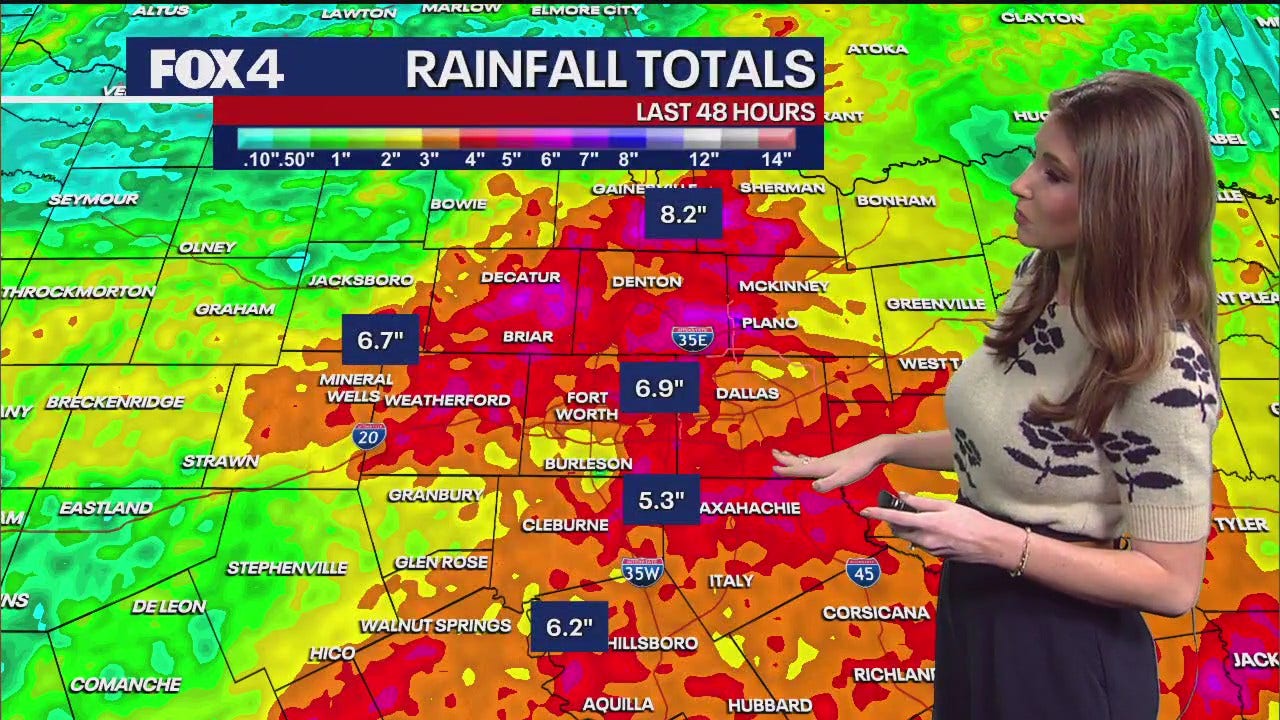- LATEST DEVELOPMENTS:
- Israeli PM’s office says U.S. hostages Judith and Natalie Raanan freed from Gaza by Hamas
- Biden expects aid to start reaching Gaza in next 24 to 48 hours
World
Hamas frees U.S. hostages Judith and Natalie Raanan held in Gaza
/cloudfront-us-east-2.images.arcpublishing.com/reuters/ONJJQDRBRBPMFAKMLSVEHGGF7Q.jpg)
GAZA/JERUSALEM, Oct 20 (Reuters) – The Islamist group Hamas released two U.S. hostages, mother and daughter Judith and Natalie Raanan, who were kidnapped in its attack on southern Israel on Oct. 7, Israeli Prime Minister Benjamin Netanyahu’s office said on Friday.
The women, who were taken from Nahal Oz kibbutz, near the Gaza border, were on their way to a military base in central Israel, a statement from Netanyahu’s office said.
Media reports in the United States said they were from Evanston, an Illinois suburb of Chicago.
They were the first hostages to be freed since Hamas gunmen burst into Israel nearly two weeks ago, killing 1,400 people, mainly civilians, and taking around 200 hostages.
Abu Ubaida, a spokesman for Hamas’s armed wing, said the hostages were released in response to Qatari mediation efforts, “for humanitarian reasons, and to prove to the American people and the world that the claims made by Biden and his fascist administration are false and baseless”.
A source briefed on the negotiations to release hostages being held by Hamas said the release of the two Americans was “a first step and discussions are ongoing for more releases.”
A team from the U.S. Embassy in Israel will shortly see the two Americans who were freed, U.S. Secretary of State Antony Blinken said.
He said there are still 10 Americans who remain unaccounted for after Hamas attacked Israel on Oct. 7.
“We know that some of them are being held hostage by Hamas,” Blinken told a briefing for reporters.
President Joe Biden in a statement thanked Qatar and Israel for their partnership in securing the pair’s release.
A Qatari foreign ministry spokesperson said the release of the hostages took place “after many days of continuous communication” and dialogue on the release of hostages would continue.
The International Committee of the Red Cross says it helped facilitate the hostages’ release by transporting them from Gaza to Israel.
Israel’s Kan public broadcaster reported the two women were dual Israeli-American nationals.
Hamas has previously described captives with “foreign” nationalities as guests who would be released, without saying if this includes Israelis with dual nationality.
An Israeli army statement earlier in the day said a majority of the hostages were alive.
Israel has vowed to wipe out Hamas, which rules Gaza, relentlessly pounding the strip with air strikes, putting the enclave’s 2.3 million people under a total siege and banning shipments of food, fuel and medical supplies.
The secretary-general of the United Nations visited the crossing between the besieged Gaza Strip and Egypt on Friday, and said humanitarian aid must be allowed across as soon as possible.
At least 4,137 Palestinians have been killed, including hundreds of children, and 13,000 wounded in Gaza, the Palestinian health ministry said. The U.N. says more than a million have been made homeless.
U.S. troops have come under increasing attacks in Syria and Iraq since Oct. 7, raising concerns about a possible escalation.
A U.S. official told Reuters that a U.S. Navy warship intercepted four missiles and more than a dozen drones on Thursday near Yemen fired from Iran-aligned Houthis in the direction of Israel, more than the number announced previously.
CHURCH HIT
Israel has amassed tanks and troops near the perimeter of Gaza for an expected ground invasion.
Defence Minister Yoav Gallant said that achieving Israel’s objectives would not be quick or easy.
“We will topple the Hamas organisation. We will destroy its military and governing infrastructure. It’s a phase that will not be easy. It will have a price,” he told a parliamentary committee.
He added that the subsequent phase would be more drawn out, but was aimed at achieving “a completely different security situation” with no threat to Israel from Gaza. “It’s not a day, it’s not a week, and unfortunately it’s not a month,” he said.
The Orthodox Patriarchate of Jerusalem, the main Palestinian Christian denomination, said that overnight Israeli forces had struck the Church of Saint Porphyrius in Gaza City, where hundreds of Christians and Muslims had sought sanctuary.
[1/12]Judith Tai Raanan and her daughter Natalie Shoshana Raanan, U.S. citizens who were taken as hostages by Palestinian Hamas militants, walk while holding hands with Brig.-Gen. (Ret.) Gal Hirsch, Israel’s Coordinator for the Captives and Missing, after they were released by the militants, in… Acquire Licensing Rights
It said targeting churches that were used as shelters for people fleeing bombing was “a war crime that cannot be ignored”.
Video from the scene showed a wounded boy being carried from rubble at night.
“They felt they would be safe here. They came from under the bombardment and the destruction, and they said they would be safe here but destruction chased them,” a man cried out.
Gaza’s Hamas-run government media office said 18 Christian Palestinians had been killed, while the health ministry later gave a toll of 16.
The Israeli military said part of the church was damaged in a strike by fighter jets on a nearby Hamas command centre involved in launching rockets and mortars towards Israel, and that it was reviewing the incident.
“The IDF (Israel Defence Forces) can unequivocally state that the church was not the target of the strike,” it said.
‘EVERYTHING I DREAMT OF’ DESTROYED
Israel has already told all civilians to evacuate the northern half of the Gaza Strip, which includes Gaza City. Many people have yet to leave saying they fear losing everything and have nowhere safe to go with southern areas also under attack.
In Zahra, a northern Gaza town, residents said their entire district of some 25 apartment buildings was razed.
They received Israeli warning messages on their mobile phones at breakfast, followed 10 minutes later by a small drone strike. After another 20 minutes, F-16 warplanes brought the buildings down in huge explosions and clouds of dust.
“Everything I ever dreamt of and thought that I have achieved was gone. In that apartment was my dream, my memories with my children, and my wife, was the smell of safety and love,” Ali, a resident of the district, told Reuters by phone.
The United Nations humanitarian affairs office said more than 140,000 homes – nearly a third of all homes in Gaza – have been damaged, with nearly 13,000 completely destroyed.
The south of the enclave has also been regularly hit. Rescue workers were combing through the wreckage of a house in the main southern city, Khan Younis, for survivors. One carried the limp body of a child.
“We don’t want to receive aid, we want the destruction and the killing of children in their sleep to stop. We are tired,” said neighbour Joumana Khreis.
AID STILL HELD UP
International attention has focused on getting aid to Gaza through the one access point not controlled by Israel, the Rafah crossing to Egypt.
Biden, who visited Israel on Wednesday, said he believed trucks carrying aid would get through in the next 24-48 hours.
The White House said Biden and Netanyahu on Friday discussed plans to begin moving humanitarian assistance into Gaza from Egypt.
U.N. Secretary-General Antonio Guterres toured the checkpoint on Egypt’s side and called for a meaningful number of trucks to enter Gaza every day and checks – which Israel insists on to stop aid reaching Hamas – to be quick and pragmatic.
“We are engaging very actively with the Israelis, with the Egyptians, with the Americans to see if as soon as possible we are able to move the trucks,” he said.
Western leaders have so far mostly offered support to Israel’s campaign against Hamas, although there is mounting unease about the plight of civilians in Gaza.
Many Muslim states, however, have called for an immediate ceasefire, and protests demanding an end to the bombardment were held in cities across the Islamic world on Friday.
Turkish President Tayyip Erdogan called on Israel to end “its operations amounting to genocide”.
The conflict is spreading to two other fronts.
Clashes at the border between Israel and Lebanon’s Hezbollah movement have been the deadliest since a full-blown war in 2006, with Israel ordering the evacuation of more than 20,000 residents from the border town of Kiryat Shmona on Friday.
The West Bank, where Palestinians have limited self-rule under Israeli military occupation, has experienced the deadliest clashes since the second intifada uprising ended in 2005.
Reporting by Nidal al-Mughrabi in Gaza, Doina Chiacu in Washington and the Washington and Jerusalem Bureaus; Writing by Peter Graff, Alex Richardson and Idrees Ali; Editing by Philippa Fletcher, Daniel Wallis, Howard Goller and Diane Craft
Our Standards: The Thomson Reuters Trust Principles.

Continue Reading
World
ExxonMobil sues California over climate disclosure laws
Exxon Mobil Corporation is suing the state of California over a pair of 2023 climate disclosure laws that the company says infringe upon its free speech rights, namely by forcing it to embrace the message that large companies are uniquely to blame for climate change.
The oil and gas corporation based in Texas filed its complaint Friday in the U.S. Eastern District Court for California. It asks the court to prevent the laws from going into effect next year.
In its complaint, ExxonMobil says it has for years publicly disclosed its greenhouse gas emissions and climate-related business risks, but it fundamentally disagrees with the state’s new reporting requirements.
The company would have to use “frameworks that place disproportionate blame on large companies like ExxonMobil” for the purpose of shaming such companies, the complaint states.
Under Senate Bill 253, large businesses will have to disclose a wide range of planet-warming emissions, including both direct and indirect emissions such as the costs of employee business travel and product transport.
ExxonMobil takes issue with the methodology required by the state, which would focus on a company’s emissions worldwide and therefore fault businesses just for being large as opposed to being efficient, the complaint states.
The second law, Senate Bill 261, requires companies making more than $500 million annually to disclose the financial risks that climate change poses to their businesses and how they plan to address them.
The company said in its complaint that the law would require it to speculate “about unknowable future developments” and post such speculations on its website.
A spokesperson for the office of California Gov. Gavin Newsom said in an email that it was “truly shocking that one of the biggest polluters on the planet would be opposed to transparency.”
World
German chancellor defends remarks on migrants suggesting citizens ‘afraid to move around in public spaces’
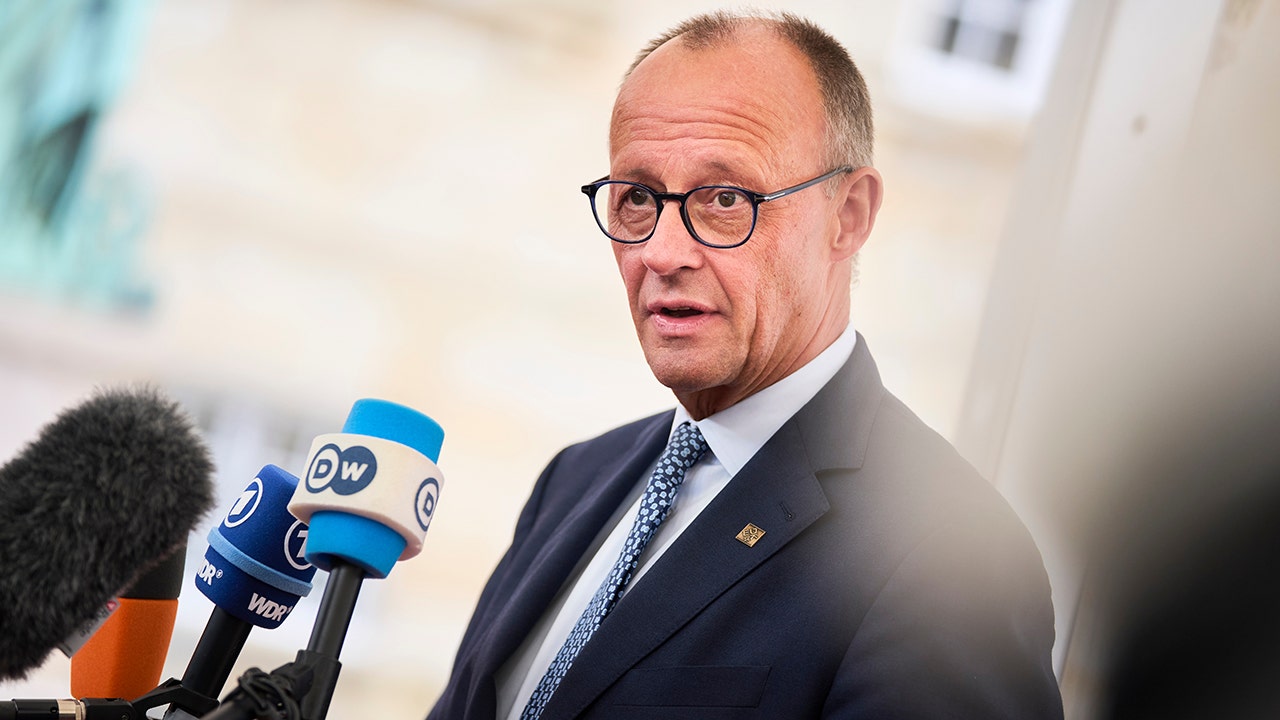
NEWYou can now listen to Fox News articles!
German Chancellor Friedrich Merz has doubled down on comments he made about migration, saying many Germans and Europeans are “afraid to move around in public spaces.”
Merz has rejected criticism from some German political circles over his government’s tough stance on illegal immigration.
“But we still have this problem in the cityscape, of course, and that’s why the federal interior minister is facilitating and carrying out large-scale deportations,” he said during a visit to Potsdam last week.
GERMANY BRACES UNDER COLLAPSING GOVERNMENT AND LOOMING TRUMP TRADE WAR
German Chancellor Friedrich Merz sparked backlash while remarking about the country’s migration policies. (Thomas Traasdahl/Ritzau Scanpix via AP)
The statement prompted backlash, some accusing the German leader of being racist. He rejected the criticism while on the sidelines of a summit on the Western Balkans in London, saying migrants were “an indispensable part of our labor market,” German-based DW News reported.
He also claimed that many people in Germany and across Europe are nonetheless “afraid to move around in public spaces” because of migrants “who do not have permanent residence status, do not work and do not abide by our rules,” the outlet reported.
MD GOV DEFENDS $190K TRUMP-CENTRIC IRISH CONSULTANT CONTRACT AS POTUS MOVES IN NEXT DOOR
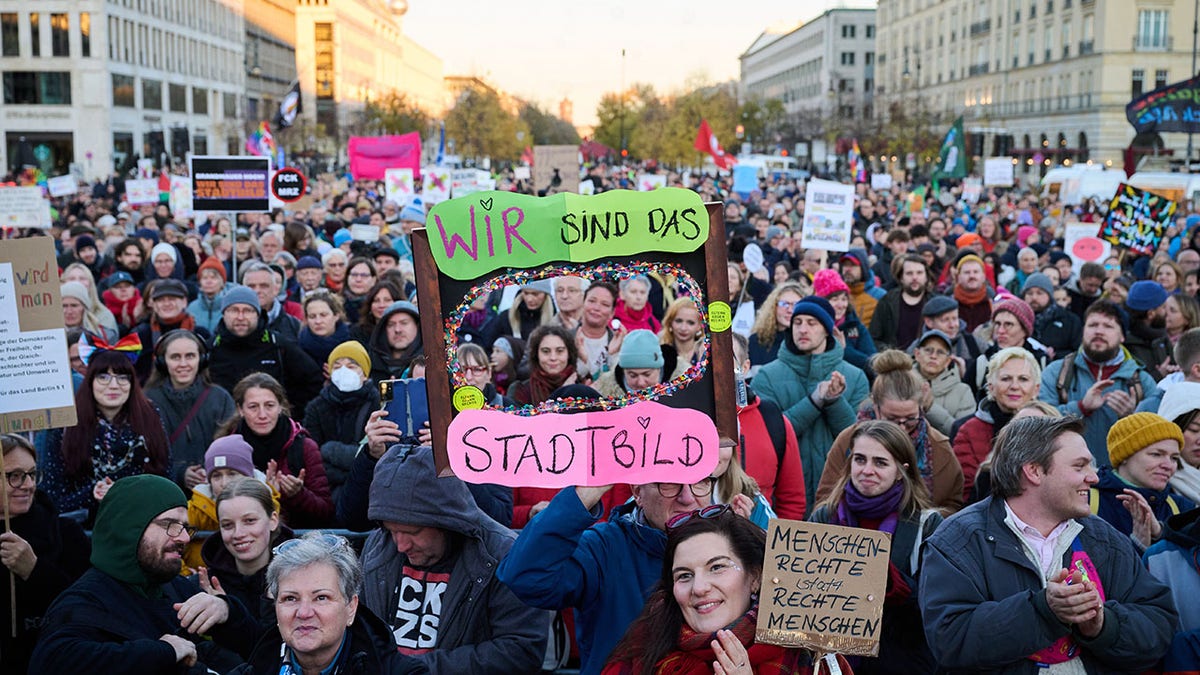
Numerous demonstrators gather for a demonstration in Berlin Oct. 19, 2025, with the slogan “Brandmauer hoch!” (“We are the cityscape”), referring to a statement made by Chancellor Merz in reference to migration policy. (Annette Riedl/picture alliance via Getty Images)
“I don’t know whether you have children. If you do, and there are daughters among them, ask your daughters what I might have meant. I suspect you’ll get a pretty clear and unambiguous answer. There’s nothing I need to retract,” he said when asked if he would withdraw his earlier remarks.
Some have signed a petition disputing Merz’s comments. The signees include actor Marie Nasemann and environmental activist Luisa Neubauer.
“There are approximately 40 million daughters in this country. We have a genuine interest in ensuring that our safety is taken seriously,” Neubauer wrote on Instagram. “What we are not interested in is being misused as a pretext or justification for statements that were ultimately discriminatory, racist and deeply hurtful.”
World
Slovakia's Robert Fico in talks with Viktor Orbán about his Smer party joining Patriots for Europe
Viktor Orbán’s political advisor, Balázs Orbán, told Euronews that the two Prime Ministers are discussing his Smer party joining the Patriots for Europe. If Fico joins, the Patriots could add two new prime ministers, including the Czech Republic Andrej Babiš.
-

 World6 days ago
World6 days agoIsrael continues deadly Gaza truce breaches as US seeks to strengthen deal
-

 New York3 days ago
New York3 days agoVideo: How Mamdani Has Evolved in the Mayoral Race
-

 News5 days ago
News5 days agoVideo: Federal Agents Detain Man During New York City Raid
-

 Technology6 days ago
Technology6 days agoAI girlfriend apps leak millions of private chats
-

 News5 days ago
News5 days agoBooks about race and gender to be returned to school libraries on some military bases
-
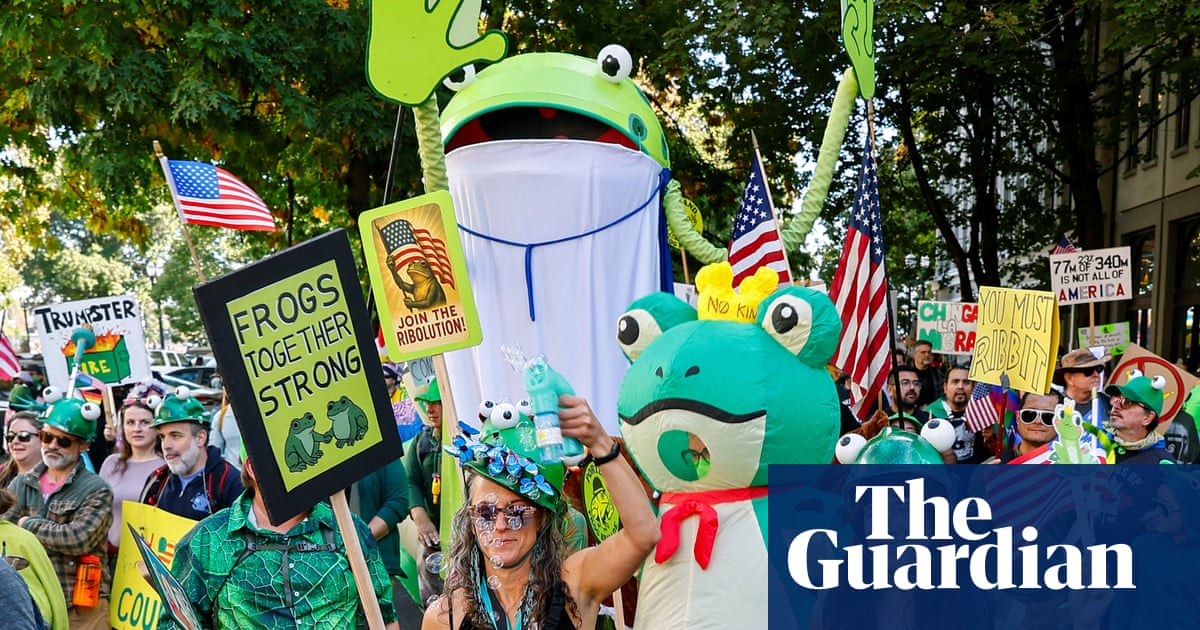
 News6 days ago
News6 days agoTrump news at a glance: president can send national guard to Portland, for now
-
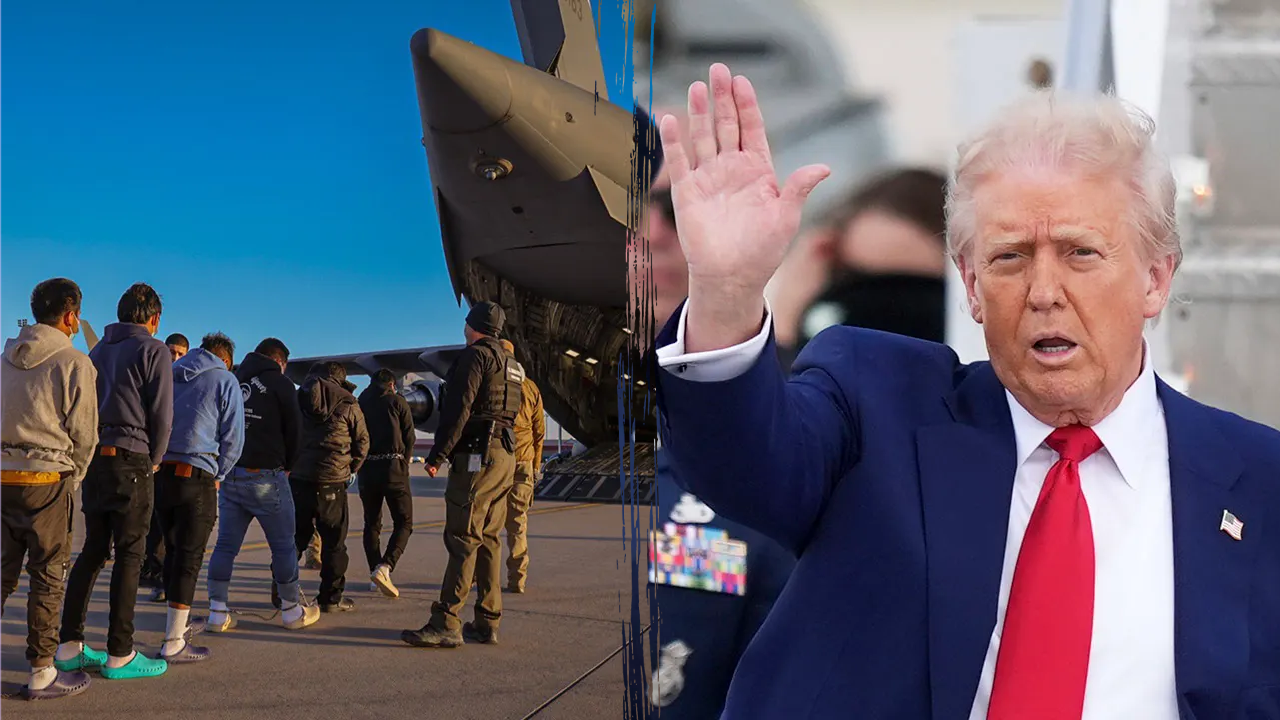
 Politics6 days ago
Politics6 days agoTrump admin on pace to shatter deportation record by end of first year: ‘Just the beginning’
-

 Business6 days ago
Business6 days agoUnionized baristas want Olympics to drop Starbucks as its ‘official coffee partner’
